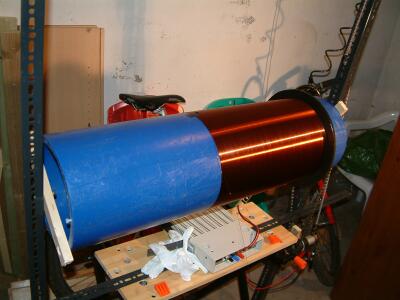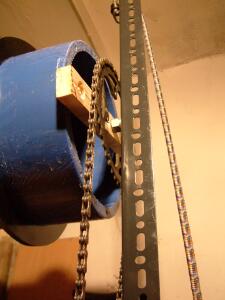I was trying to do some calculations as to the torque required for halfway decent acceleration on the typical pickup winder. Both for those looking to upgrade existing winders and an idea I have.
Anyways I need to calculate the 'Radius of gyration' and I realized that I don't wind 5 or 6 string bass pickups.
I am pretty sure that 95mm or ~3 3/4" is the widest common string spread for on a 6 string bass but I need the weight.
Does anyone here have a coil from such a beast spooled up who could put it on a scale and tell me the weight. I will pad it by quite a bit so even a kitchen scale would probably be close enough.
Acceleration Time in Seconds = .039 x WK^2 (Final RPM – Initial RPM) / Torque in inch lbs. Where W is the weight in pounds and K is the radius of gyration in feet.
So one half of 95mm is ~ 48mm = 0.15748 feet
70 ounce inches = 4.375 inch pounds
(.39 * (1*0.157^2) * (1000-0))/4.375 = 2.42691
So if my math is correct and if the mass of your shaft,pickup and plate was one pound a 70 ounce inch motor would git 1000 rpm in about two and a half seconds.
Thanks,
enkindler
P.S. I feel dirty doing this type of math in the imperial system (although it is better in the wood shop)
Anyways I need to calculate the 'Radius of gyration' and I realized that I don't wind 5 or 6 string bass pickups.
I am pretty sure that 95mm or ~3 3/4" is the widest common string spread for on a 6 string bass but I need the weight.
Does anyone here have a coil from such a beast spooled up who could put it on a scale and tell me the weight. I will pad it by quite a bit so even a kitchen scale would probably be close enough.
Acceleration Time in Seconds = .039 x WK^2 (Final RPM – Initial RPM) / Torque in inch lbs. Where W is the weight in pounds and K is the radius of gyration in feet.
So one half of 95mm is ~ 48mm = 0.15748 feet
70 ounce inches = 4.375 inch pounds
(.39 * (1*0.157^2) * (1000-0))/4.375 = 2.42691
So if my math is correct and if the mass of your shaft,pickup and plate was one pound a 70 ounce inch motor would git 1000 rpm in about two and a half seconds.
Thanks,
enkindler
P.S. I feel dirty doing this type of math in the imperial system (although it is better in the wood shop)



 I'd much rather induct anyway.
I'd much rather induct anyway.
Comment